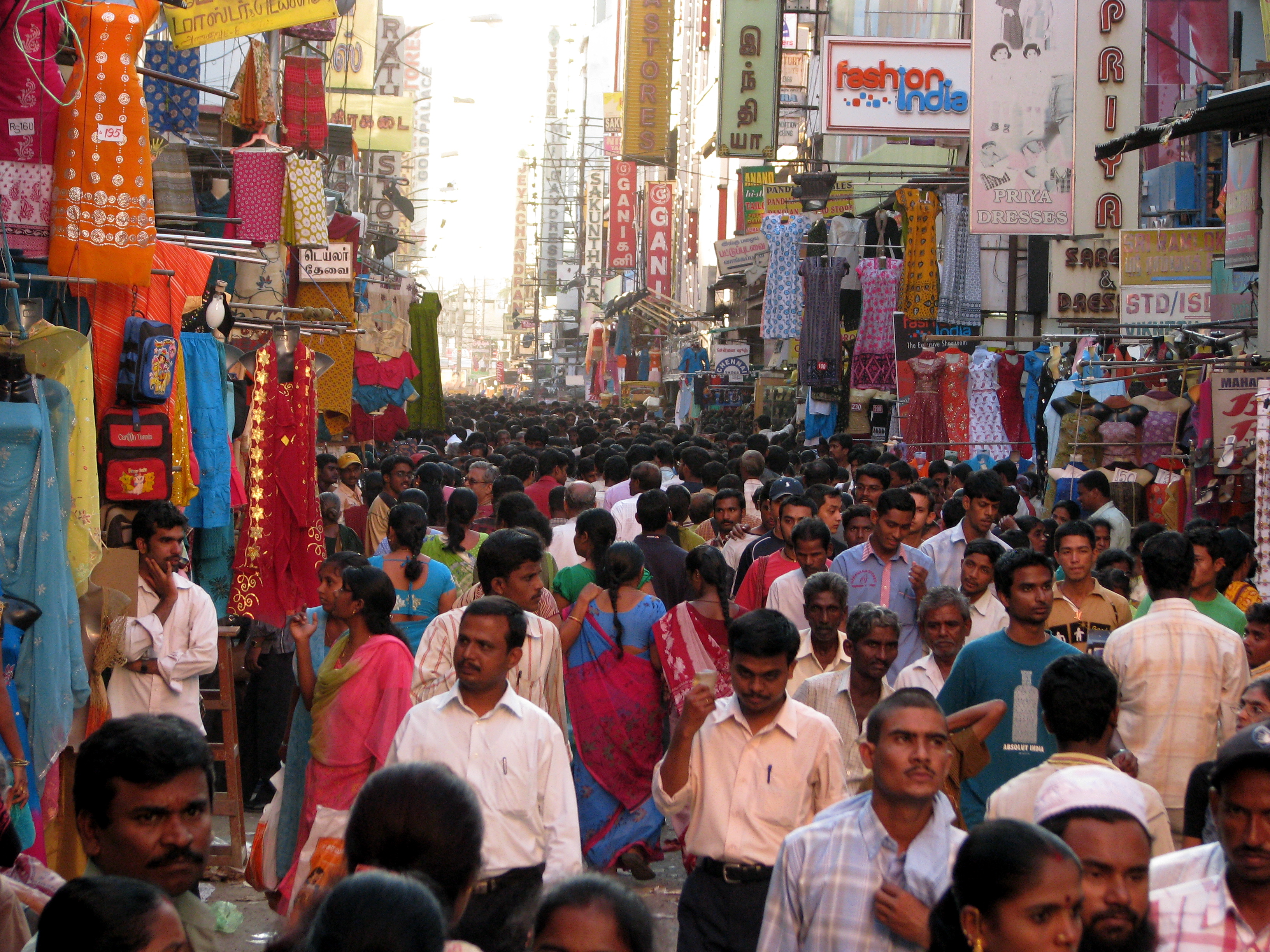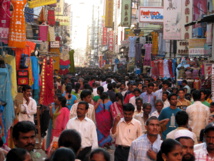The data suggest that pace of growth in India circumvents one of the largest economies in the world - Chinese. In 2015, China's GDP has increased by 6.9% over the year, which was the country’s weakest result for 25 years. "In the course of China's economic slowdown, India definitely has the upper hand in the issue of the best growth rates", - CNBC quotes Peter Bookvar, chief specialist in the analysis of markets at Lindsey Group.
Sustainable growth of the Indian economy is boosted by both external and internal factors.
Among the first is the price of raw materials, which in the current situation help India cope with the economic problems.
India is a major net importer of oil, what allows restraining inflation against the background of falling prices. According to the BP Statistical Review of World Energy, in the ten years from 2004 to 2014, domestic oil production in India grew by 15.8% to 895 thousand barrels per day. At the same time, consumption over the same period increased by 50.5% to 3.8 million barrels per day. In terms of oil consumption, India is the fourth largest in the world after the US, China and Japan.
Falling oil prices has become one of the strongest growth drivers - The Financial Times quotes JP Morgan’s economist Sajjith Chinoy. According to the expert, they have added more than one percentage point in the current year due to increase in purchasing power of the population, companies and the government.
Demography also plays for India, as, according to expectations of some demographers, the country's population may be the youngest in the world by 2020, with a third of the population aged 15 to 34 years, reported The Hindu with reference to the joint report by IRIS Knowledge Foundation and the UN -Habitat. This, in turn, is not only labor, but also a powerful consumer market, contrary to China, with its continuing serious processes of aging.
Pro-market government of Narendra elected in May 2014 has provided support, too. The current Prime Minister has promised to carry out prominent reforms and attract major foreign investment. For the first nine months of 2015, foreign companies have invested $ 26.5 billion in India, 18% more than the year before.
Since that time, the authorities themselves have also devoted significant amount of money to rehabilitation of roads, railways and ports.
According to Credit Suisse AG, government capital expenditures amounted to $ 28 billion from April to December 2015, which is 33% higher year on year. Roads got $ 9 billion, which is 35% more than last year.
However, economists have serious doubts in validity of the Central Statistical Bureau's data. Not so long ago, India has changed calculation method for economic indicators.
For example, this large-scale revision of approaches to collection of statistics boosted the GDP growth in the 2013/14 financial year from 4.7 to 6.9%, according to The Telegraph.
"There is a significant deviation between the optimistic GDP growth and a gloomy picture depicted by other indicators. Never before it was so paradoxical "- The Wall Street Journal quotes Ritika Mankar Mukherjee, economist at Capital Ambit. Manufacturing and services (the largest components of GDP, 29.7 and 52.7% respectively) in the last quarter rose by 12.6 and 9.4% yoy, respectively, from the Statistics’ data. At the same time, the agricultural sector decreased by 1%. According to the analyst, the GDP is dominated by e-commerce and IT-sector (which, according to the authorities’ expectations, may account for 25% of GDP in a few years). The rest of the industry is slowing.
Less positive business confidence indices, export and freight traffic, as well as pace of bank lending also produce doubts.
In a letter to customers, research company Capital Economics wrote that, on the one hand, one can enjoy the Indian welfare and stability, and on the other - that the figures need to be treated with caution, because accuracy of the numbers really raises questions. "We are inclined to second. Ultimately, more accurate measurements demonstrate that all is not so rosy. Sales of durable goods are weak. Lending growth rates are far from ideal, "- quoted by CNBC.
Sustainable growth of the Indian economy is boosted by both external and internal factors.
Among the first is the price of raw materials, which in the current situation help India cope with the economic problems.
India is a major net importer of oil, what allows restraining inflation against the background of falling prices. According to the BP Statistical Review of World Energy, in the ten years from 2004 to 2014, domestic oil production in India grew by 15.8% to 895 thousand barrels per day. At the same time, consumption over the same period increased by 50.5% to 3.8 million barrels per day. In terms of oil consumption, India is the fourth largest in the world after the US, China and Japan.
Falling oil prices has become one of the strongest growth drivers - The Financial Times quotes JP Morgan’s economist Sajjith Chinoy. According to the expert, they have added more than one percentage point in the current year due to increase in purchasing power of the population, companies and the government.
Demography also plays for India, as, according to expectations of some demographers, the country's population may be the youngest in the world by 2020, with a third of the population aged 15 to 34 years, reported The Hindu with reference to the joint report by IRIS Knowledge Foundation and the UN -Habitat. This, in turn, is not only labor, but also a powerful consumer market, contrary to China, with its continuing serious processes of aging.
Pro-market government of Narendra elected in May 2014 has provided support, too. The current Prime Minister has promised to carry out prominent reforms and attract major foreign investment. For the first nine months of 2015, foreign companies have invested $ 26.5 billion in India, 18% more than the year before.
Since that time, the authorities themselves have also devoted significant amount of money to rehabilitation of roads, railways and ports.
According to Credit Suisse AG, government capital expenditures amounted to $ 28 billion from April to December 2015, which is 33% higher year on year. Roads got $ 9 billion, which is 35% more than last year.
However, economists have serious doubts in validity of the Central Statistical Bureau's data. Not so long ago, India has changed calculation method for economic indicators.
For example, this large-scale revision of approaches to collection of statistics boosted the GDP growth in the 2013/14 financial year from 4.7 to 6.9%, according to The Telegraph.
"There is a significant deviation between the optimistic GDP growth and a gloomy picture depicted by other indicators. Never before it was so paradoxical "- The Wall Street Journal quotes Ritika Mankar Mukherjee, economist at Capital Ambit. Manufacturing and services (the largest components of GDP, 29.7 and 52.7% respectively) in the last quarter rose by 12.6 and 9.4% yoy, respectively, from the Statistics’ data. At the same time, the agricultural sector decreased by 1%. According to the analyst, the GDP is dominated by e-commerce and IT-sector (which, according to the authorities’ expectations, may account for 25% of GDP in a few years). The rest of the industry is slowing.
Less positive business confidence indices, export and freight traffic, as well as pace of bank lending also produce doubts.
In a letter to customers, research company Capital Economics wrote that, on the one hand, one can enjoy the Indian welfare and stability, and on the other - that the figures need to be treated with caution, because accuracy of the numbers really raises questions. "We are inclined to second. Ultimately, more accurate measurements demonstrate that all is not so rosy. Sales of durable goods are weak. Lending growth rates are far from ideal, "- quoted by CNBC.



















